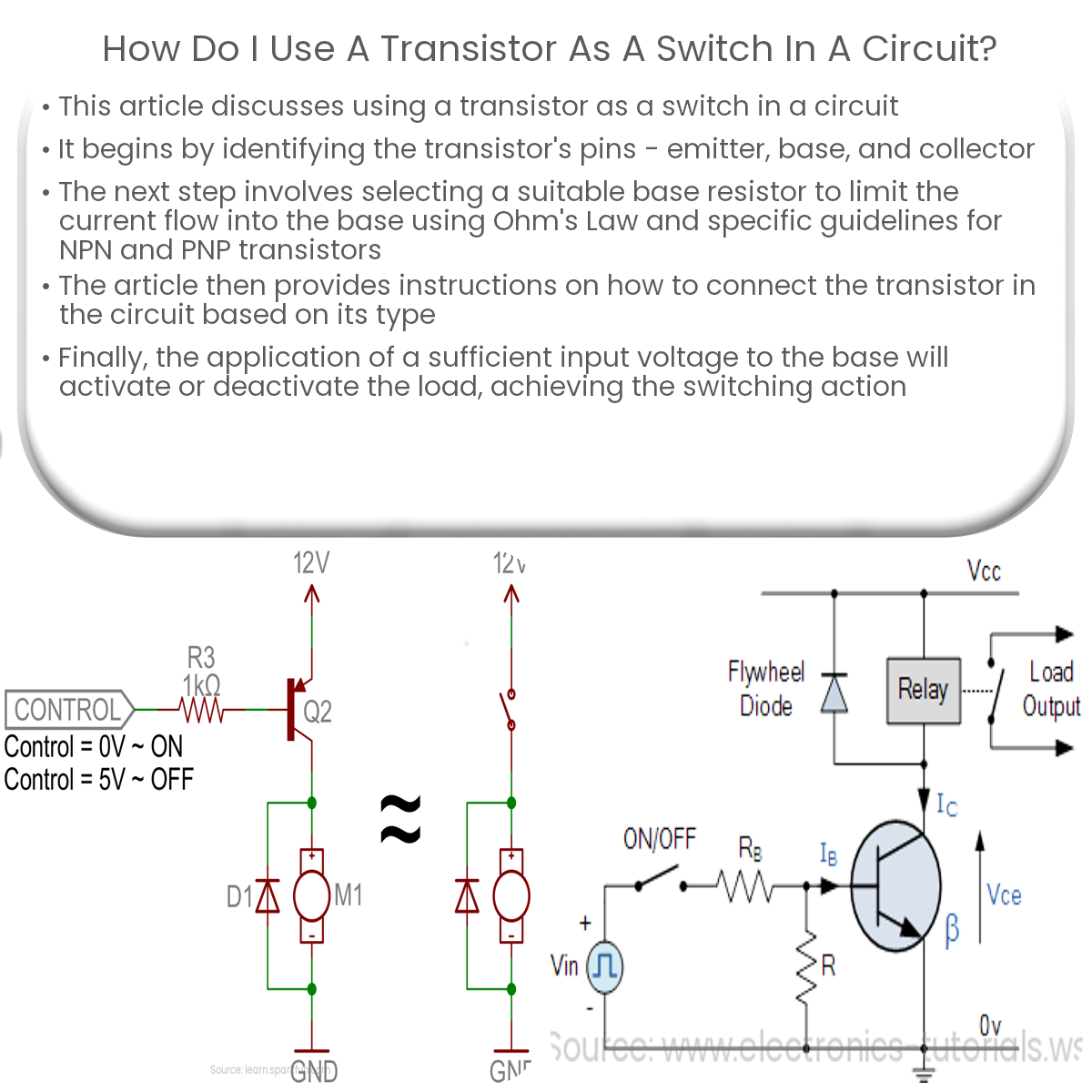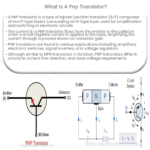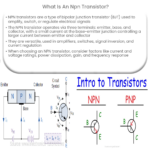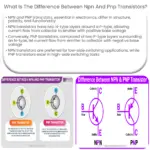To use a transistor as a switch, connect the emitter, base, and collector properly, select a suitable base resistor, and apply the input signal.
Using a Transistor as a Switch in a Circuit
A transistor, whether NPN or PNP, can be used as an electronic switch in a circuit. The ability to control a large current with a small input signal makes transistors ideal for this purpose. In this article, we’ll explore how to use a transistor as a switch in a circuit.
1. Identify the Transistor’s Pins
First, determine the type of transistor you’re using (NPN or PNP) and identify its pins: emitter (E), base (B), and collector (C). The datasheet for your specific transistor will provide this information.
2. Select a Suitable Base Resistor
To ensure proper switching, you’ll need to choose an appropriate base resistor (RB) to limit the current flowing into the base. Use Ohm’s Law (V = IR) and the following guidelines:
- NPN transistor: RB = (VIN – VBE) / IB
- PNP transistor: RB = (VCC – VIN – VEB) / IB
Here, VIN is the input voltage, VBE and VEB are base-emitter voltages (typically 0.7V for silicon transistors), and IB is the desired base current.
3. Connect the Transistor in the Circuit
Once you’ve selected a suitable base resistor, follow these steps to connect the transistor as a switch:
- For an NPN transistor, connect the emitter to ground, the base to the input signal through RB, and the collector to the load, with the load connected to the positive supply voltage (VCC).
- For a PNP transistor, connect the emitter to VCC, the base to the input signal through RB, and the collector to the load, with the load connected to ground.
4. Apply the Input Signal
When a sufficient input voltage is applied to the base:
- NPN transistor: it will turn on, allowing current to flow from the collector to the emitter, activating the load.
- PNP transistor: it will turn off, stopping current flow from the emitter to the collector, deactivating the load.
Conversely, when the input voltage is insufficient:
- NPN transistor: it will turn off, stopping current flow and deactivating the load.
- PNP transistor: it will turn on, allowing current to flow and activating the load.
By following these steps, you can successfully use a transistor as a switch in your circuit, providing efficient and reliable control of various electronic devices.





